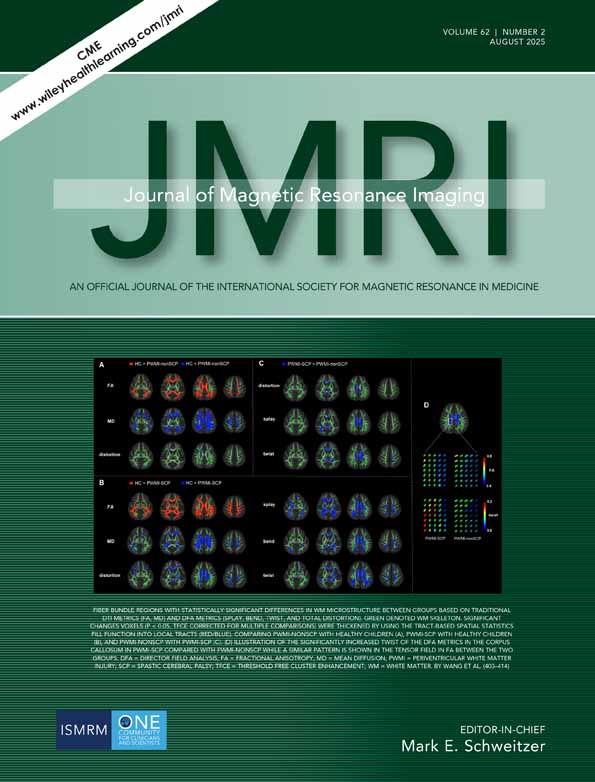Multi-Parametric Quantitative MRI in the Early Differential Diagnosis of Ambulatory Children With Duchenne Muscular Dystrophy and Becker Muscular Dystrophy
Funding: This work was supported by the Hunan Provincial Natural Science Foundation of China (2023JJ30552, 2025JJ81045).
ABSTRACT
Background
Duchenne muscular dystrophy (DMD) and Becker muscular dystrophy (BMD), the most common dystrophinopathies, require distinct treatments. Corticosteroids are effective for DMD but less so for BMD. Early diagnosis can improve DMD outcomes and prevent BMD overtreatment. However, differentiating them in younger children with mild symptoms is challenging due to overlapping features.
Purpose
To evaluate the performance of multi-parametric quantitative MRI (qMRI) in early differentiation between BMD and DMD, particularly among younger patients in the mild disease stage.
Study Type
Prospective.
Subjects
121 DMD males (mean age 8.5 ± 1.6 years), 28 BMD males (9.7 ± 3.3 years), and 26 male healthy controls (HCs) (9.4 ± 2.7 years).
Field Strength/Sequence
3.0T/3-point Dixon (fast-spin-echo), T1-mapping (modified-Look-Locker-inversion-recovery), and T2-mapping (balance-steady-state-free-precession).
Assessment
qMRI measurements (fat fraction [FF], T1, and T2) in 18 pelvic and thigh muscles were conducted. A linearized NorthStar ambulatory assessment (NSAA) score was used to evaluate the function status, with a mild functional decline stage defined as a score of 76–100.
Statistical Tests
Mann–Whitney test, Kruskal–Wallis test, and Receiver operating characteristic curves. A P-value < 0.05 was considered statistically significant.
Results
In all subject groups, DMD exhibits significantly higher FF and T2 and lower T1 compared to BMD. The max differences in mean FF, T1, and T2 was 45.29%, 543 ms, and 31.0 ms, respectively. Overall, the area under curve (AUC) values for FF surpassed those for T2 and T1 in the majority of muscles. In the mild subgroup below 10 years old, DMD had significantly higher FF and T1 than BMD. The combination of FF and T1 in gluteus medius, rectus femoris, vastus lateralis, vastus intermedius, vastus medialis, and adductor magnus achieved higher AUCs (0.816–0.957) than FF (0.773–0.862) or T1 (0.701–0.819) in differentiating the two subgroups.
Data Conclusion
Multi-parametric qMRI demonstrates potential as an effective tool for early differentiation between DMD and BMD.
Evidence Level
2
Technical Efficacy
Stage 3




